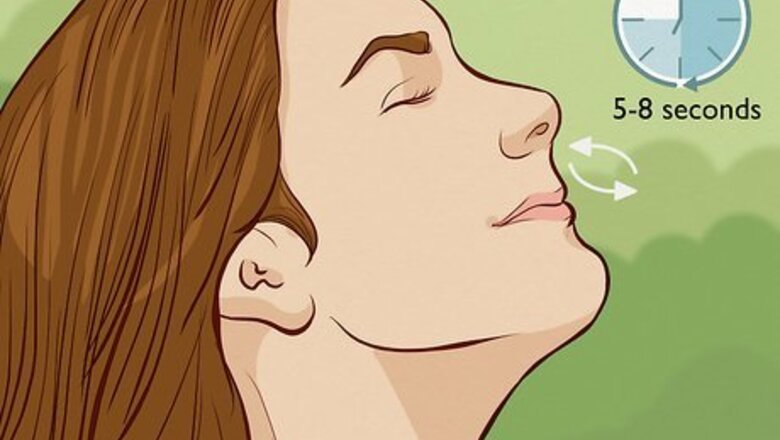
views
X
Trustworthy Source
American Heart Association
Leading nonprofit that funds medical research and public education
Go to source
Your body naturally alters your heart rate based on your environment and mood, so an increased heart rate every now and then is completely normal, but it can still be alarming at times. In this article, we’ll teach you how to slow your heart rate quickly, what lifestyle changes you can make to improve your heart health, and when you should see a doctor.
- Practice slow, deep breathing techniques when your heart rate rises to calm your mind and body down.
- Splash cold water on your face or press a cold compress on your forehead to regulate an accelerated heart rate.
- Exercising regularly and sticking to a healthy diet can keep your heart happy and healthy while lowering your heart rate and improving your overall health.
- Cut back on your caffeine intake if your heart tends to beat faster with each cup of coffee or glass of soda, as you may have a caffeine sensitivity.
Lowering Your Heart Rate Fast
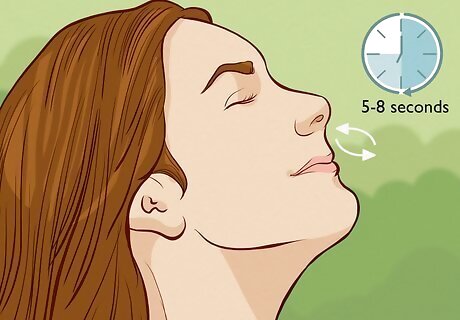
Breathe in through your nose and out through your mouth slowly. Slow deep breathing exercises have been scientifically proven to lower and control your heart rate. So, when you feel like your heart is beating out of your chest, take a deep breath for 4 seconds, hold it for 7 seconds, and then breath out for 8 seconds. Try following a music-guided breathing activity by searching “music breathing exercise” on YouTube. Set a time for 30 seconds and take 6 deep breaths for 5 counts each.
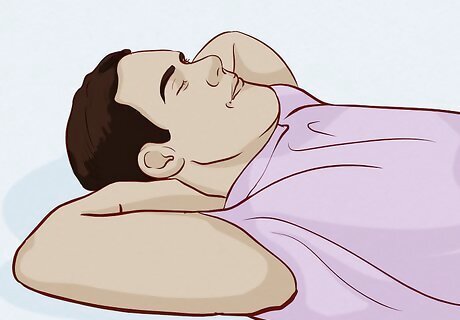
Take a moment to stop, rest, and relax. If you notice your heart rate accelerating, lie down or sit somewhere comfortable, like your bed or a couch. Close your eyes and focus on your breathing. Relax your muscles, and stay in a reclined position until your heart rate slows. Visualize and concentrate on an image that calms your mind and body, such as a beach or mountainside. Try listening to calming music or watching a relaxing video. Start meditating while you’re in this position to help yourself focus inward.
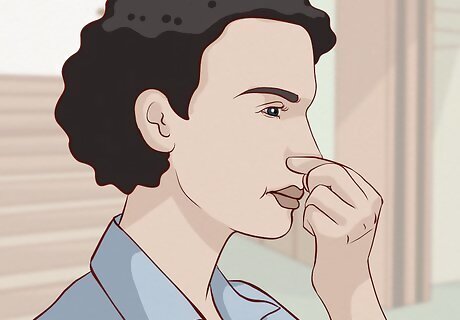
Try stimulating the vagus nerve with the valsalva maneuver. The vagus nerve controls your heart rate and fight or flight response, so activating it could help slow your heart rate. Take a deep breath and strain the muscles in your abdomen as if you’re going to the bathroom. Hold the pressure for 5 seconds, then let go. Repeat until you feel your heart rate slowing. Coughing or holding your knees up to your chest can also help stimulate the nerve. Do not try this maneuver if you have heart valve disease, coronary artery disease, or congenital heart disease.
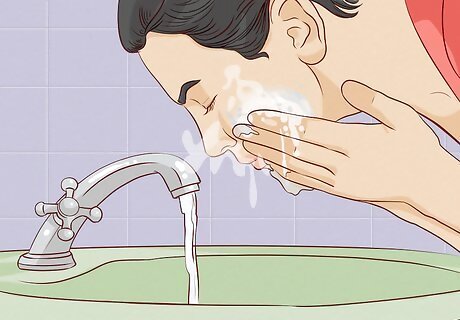
Splash your face with cold water. Putting ice water on your face is another way to stimulate your vagus nerve and slow your heart rate. Simply keep splashing your face with very cold water until you feel calmer, or place an ice pack or cold washcloth on your forehead.
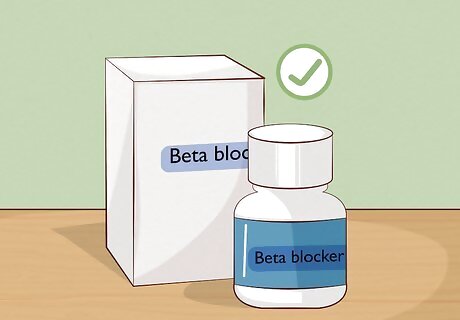
Take a beta blocker. If you have a chronic high heart rate, make an appointment with your doctor to discuss taking medication to help. Beta blockers are prescription drugs designed to slow your heart rate and lower blood pressure. They’re often used to treat irregular heart rhythm, heart failure, chest pain, and migraines. Like any medication, beta blockers have side effects, such as fatigue, dizziness, difficulty sleeping, and weakness. Your doctor may need to perform a heart rate variability biofeedback test before prescribing medications. All this entails is a few sticky electrical sensors that measure your heart rate.
Lifestyle Changes
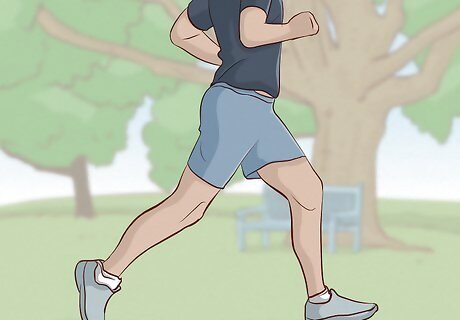
Exercise regularly. Believe it or not, getting your heart pumping for at least 30 minutes a day can help lower your resting heart rate. Try adding more aerobic exercises to your daily routine, like walking, running, swimming, and cycling. Not only will this improve your heart health, but it can also help your mood and mental health. Talk to your doctor about how intense your exercises should be, especially if you have a heart condition. Build up your stamina as you exercise by increasing your running or walking pace.
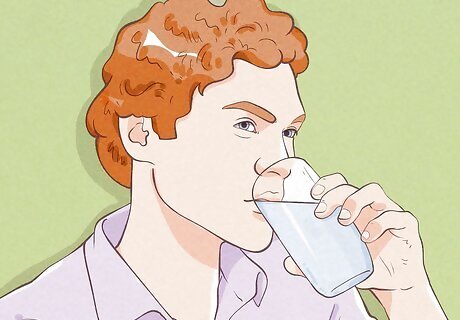
Drink 10 to 15 cups of water a day. Staying hydrated is an important part in keeping your heart happy and healthy. The more water you drink, the easier it is for your heart to pump blood through your body and the less work it’ll have to do. Keep a filled, large refillable water bottle at your desk or in your car, so you’re more likely to drink water throughout the day. Swap out at least one sugary drink a day with a glass of water to make sure you’re getting enough H20. Start your morning with a glass of water to help you wake up and feel refreshed.
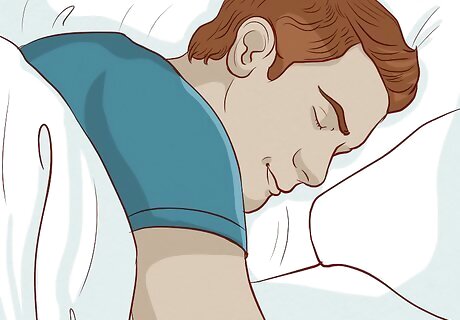
Get plenty of sleep. The average adult needs at least 7 to 8 hours of sleep a night. A good night’s sleep ensures that your heart has recovered from a full day of working. Not getting enough sleep could lead to high blood pressure and even heart attacks. Try wearing earplugs while you sleep if you keep waking up from loud noises. Stick to a regular sleep routine, going to bed at the same hour each night and waking up at the same time each morning (even on weekends). Avoid screens 1 to 2 hours before bed to help your brain wind down.
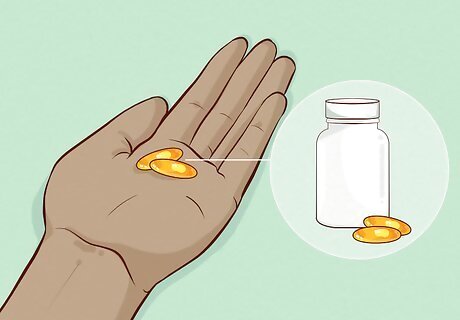
Take a fish oil capsule every day. Some studies have shown that increased levels of omega-3s can lower heart rate. Now, adding a fish oil vitamin to your daily routine won’t cure a chronically elevated heart rate, but it could reduce symptoms. Aim to take between 2 to 3 g of omega-3 fatty acids a day.| Talk to your doctor before taking fish oil if you’re on blood pressure medications, as the supplement may interfere with the drug.
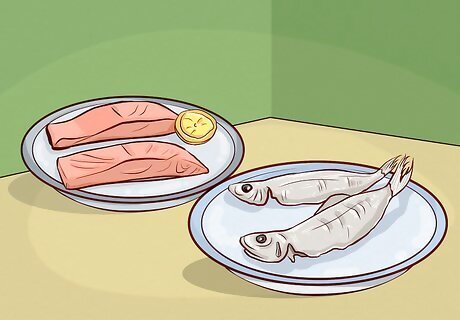
Add more heart-healthy foods to your diet. If you want to lower your heart rate naturally, focus on eating more whole grains, vegetables, fruits, and lean animal protein, and avoid trans fats, red meat, and refined carbohydrates. Try eating more fish for heaty-healthy omega-3s and swapping your evening cookie for a fresh bowl of fruit. Prepare your foods with healthier fats, like olive or avocado oil. Swap white bread and pasta with whole grain bread and whole wheat pasta. Choose low-fat or non-fat milks, yogurts, and cheeses. Skip the surgery and carbonated drinks with water.
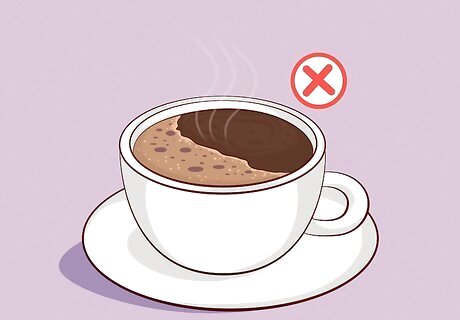
Lower your caffeine intake. Your morning cup of coffee may wake you up, but it also accelerates your heart rate. The increase and buzz are temporary but can add up over time. Try slowly weaning off caffeine to decrease your resting heart rate. Swap your second cup of coffee with decaffeinated tea, and reach for a cold glass of water instead of a can of soda. Test to see if you have a caffeine sensitivity by checking your blood pressure before drinking a caffeinated beverage and 30 to 120 minutes after drinking one. If your blood pressure increases by 5 to 10 points, your heart may be sensitive to caffeine.
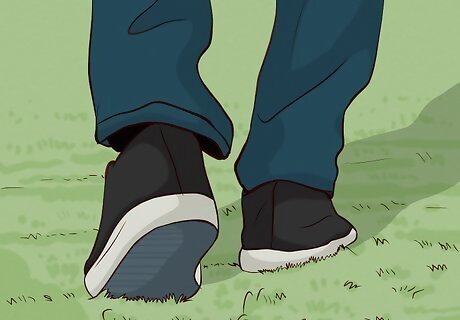
Spend more time in nature. Being in the great outdoors can help lower your heart rate and blood pressure. Not only is the fresh air good for your heart, but it also lessens stress, improves mood, and boosts your immune system. Even the quickest walk outside can do wonders for your health, so why not give it a try? Invite some friends on a weekend hiking trip to socialize and destress. Take your dog for a walk around the block when life gets overwhelming. Step outside and take a few deep breaths when you feel your heart pumping.

Give and get more hugs. Believe it or not, frequent hugs lower your blood pressure and heart rate thanks to the increase in oxytocin (the love hormone) they give you! When you hug someone, you generally feel at ease, loved, and less stressed—which helps your heart rate mellow out. So, spread the love and give all the hugs you can!
Measuring Heart Rate
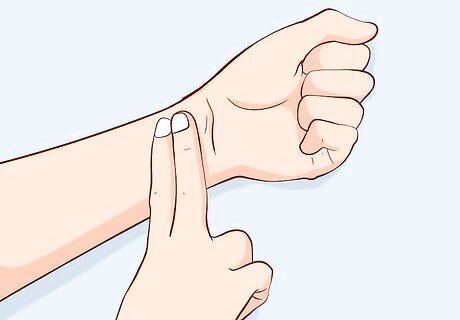
Press your index and middle finger on your wrist. To measure your heart rate, you need to count your pulse or how many beats your heart makes per minute. Hold your index and middle finger together and apply gentle pressure to the opposite wrist below the base of the thumb. You can also measure your heart rate by placing your fingers on the side of your neck below the jawbone.
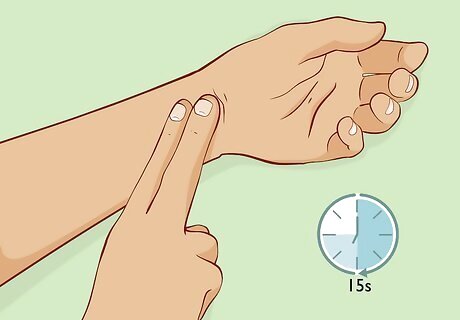
Find your pulse and count the beats for 15 seconds. You’re applying just enough pressure when you can feel a small thrum under your fingers—that’s your heart beating away! If you don’t feel the beat, that’s okay. Move your fingers around and apply more or less pressure until you do. Count how many times you feel a thrum for 15 seconds. Try setting a timer on your phone, so you only have to focus on counting the number of beats.
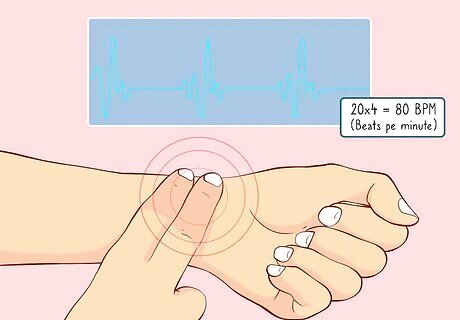
Multiply how many times your heart beat by 4. Say your heart beats 20 times for 15 seconds. To find your heart rate, you’d multiply 20 by 4, making your heart rate 80 BPM (beats per minute). An adult's average resting heart rate is 60 to 100 BPM. In other words, your heart rate should be in this range when you’re chilling and doing nothing strenuous or emotional. Heart rates can vary depending on a person’s mood, weight, medical history, environment, and lifestyle. A heart rate slower than 60 BPM is called bradycardia or slow heart. A heart rate faster than 100 BPM is called tachycardia.

Record your pulse and heart rate with an app. Don’t feel like going through the trouble of checking your heart rate yourself? No problem! Nowadays, there are tons of heart rate monitoring on the market. These apps can help you keep track of your heart rate over time or can even synch up with a smartwatch to record it throughout the day: FITIV Pulse Heart Rate Monitor Heart Rate Plus Cardiogram Instant Heart Rate


















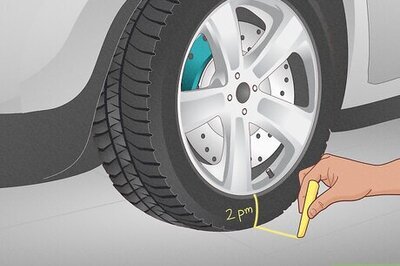
Comments
0 comment